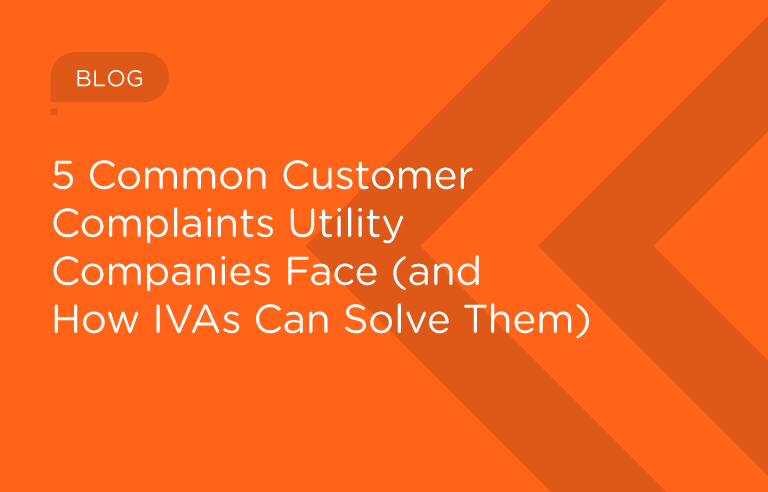Because of the regulated nature for many utility providers, customer retention is often not top of mind. But CX still matters– customers have grown to expect fast, convenient, and conversational service in multiple channels. The Prime Effect, explains how the immediate, or instant gratification of working with brands like Amazon, have had a massive impact on customer preferences and expectations. Utilities, are more benchmarking their CX performance against other industries to meet customer demand.
The current economic crisis has brought this into an even sharper focus. Energy prices are expected to rise, meaning companies are under more pressure than ever to make sure their customers are happy.
This blog will look at three methods of how to do this, namely price, sustainability, and good customer experience.
Price
With the current state of the world, pricing is the most obvious factor utility companies can use to stand out from the competition. Inflation rate in the US is currently at 8.3% and at its highest levels since the 1980s, forcing consumers to budget and pinch pennies in ways not seen in decades.
Pricing therefore appears a clear area for utility companies to appeal to customers, especially given the payment deferral programs that were rolled out in effect to support customers through the initial stages of the COVID-19 pandemic. A variety of factors are squeezing energy supplies and causing higher bills, and this isn’t expected to stop any time soon. With that in mind, pricing can’t be the only factor utility providers look at to stand out from the competition.
Sustainability
Globally, 85% of people indicate that they have shifted their purchase behavior towards being more sustainable in the past five years. And when selecting a utility provider, 74% of people listed it as a purchase criterion. Although these opinions differ across generations and demographics, it’s certainly the way the wind is blowing (pun intended) and something utility companies need to consider.
Customer experience
The demands of the modern consumer means a positive customer experience is more important than ever for your business. In fact, 90% of Americans use customer service as a factor in deciding whether or not to do business with a company, and while there may not always be significant customer choice, providing options for customer engagement provides a better operational experience. The use of technology and embracing digital transformation is essential for utility companies to ensure they’re meeting their customers needs.
Customers demand omnichannel capabilities to get the information and support they need at a time and channel of their choosing. This demand for self-service can be satisfied by mobile apps and intelligent virtual assistants, provided they’re sophisticated and intuitive enough to empower customers without frustrating them. It’s no surprise that 45% of consumers said they would prefer to have their inquiries handled by AI if it would be faster.
This use of technology to improve the customer experience of your business should further extend to instances where customers aren’t directly reaching out. Websites should be modern, mobile optimized and provide consumers with tools and information they need to complete tasks without contacting your business. Utility providers, for example, should develop their apps so users can control their energy consumption and check electrical devices in a flexible way using only their smartphone or computer, and even report an outage.
Utility providers are in a difficult position. Inflation is biting both customer and provider while supply chain issues are only exacerbating this further. Moments like this however provide opportunities where companies can shine in areas outside of just price.
Quality customer service that goes above and beyond expectation can really ease some of the burden and stress associated with affording basic essentials like electricity, water, and gas during difficult economic times.
See how Westar Energy is leading the way in customer engagement. From leveraging advanced technology to delivering exceptional service, Westar Energy has revolutionized how utility providers approach customer experience. Discover the strategies behind their success and how they’ve set a new standard in the industry. Read the full case study here.




